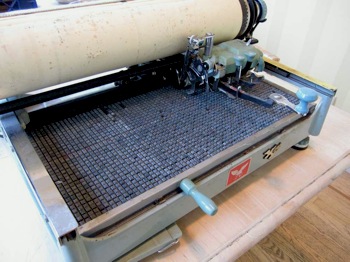 The Chinese language has tens of thousands of characters, and many have considered it nearly impossible to fit these characters onto a single workable typewriter. But that hasn’t stopped inventors from trying … and, to a certain degree, succeeding. Stanford historian Thomas Mullaney is now writing the first history of the Chinese typewriter, and he has found evidence for numerous patents and prototypes that incorporate the most commonly used characters. In addition to making a political impact in China, these machines have also potentially influenced innovations in modern computing. You can read more about Mullaney’s work on Stanford’s Human Experience website, and also watch him discuss his work in this YouTube clip.
The Chinese language has tens of thousands of characters, and many have considered it nearly impossible to fit these characters onto a single workable typewriter. But that hasn’t stopped inventors from trying … and, to a certain degree, succeeding. Stanford historian Thomas Mullaney is now writing the first history of the Chinese typewriter, and he has found evidence for numerous patents and prototypes that incorporate the most commonly used characters. In addition to making a political impact in China, these machines have also potentially influenced innovations in modern computing. You can read more about Mullaney’s work on Stanford’s Human Experience website, and also watch him discuss his work in this YouTube clip.
The History of the Seemingly Impossible Chinese Typewriter
Support Open Culture
We’re hoping to rely on our loyal readers rather than erratic ads. To support Open Culture’s educational mission, please consider making a donation. We accept PayPal, Venmo (@openculture), Patreon and Crypto! Please find all options here. We thank you! ![]()


Hehe, of course the traditional method of writing Chinese cannot be reproduced within a typewriter. Chinese used in the mashine is written with simplified characters in “Baihua” style, which basically corresponds to writing the spoken Mandarin language with characters.